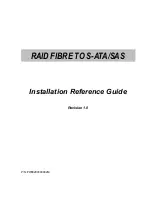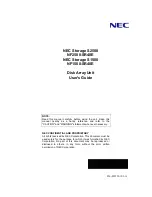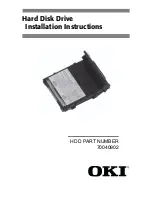
Introduction
1-8
Dual-level RAID
achieves a balance between the increased data availability
inherent in RAID 1 and RAID 5 and the increased read performance inherent in
disk striping (RAID 0). These arrays are sometimes referred to as
RAID 0+1
or
RAID 10 and RAID 0+5 or RAID 50.
In summary:
RAID 0 is the fastest and most efficient array type but offers no fault-
tolerance. RAID 0 requires a minimum of two drives.
RAID 1 is the best choice for performance-critical, fault-tolerant
environments. RAID 1 is the only choice for fault-tolerance if no more than
two drives are used.
RAID 3 can be used to speed up data transfer and provide fault-tolerance
in single-user environments that access long sequential records. However,
RAID 3 does not allow overlapping of multiple I/O operations and requires
synchronized-spindle drives to avoid performance degradation with short
records. RAID 5 with a small stripe size offers similar performance.
RAID 5 combines efficient, fault-tolerant data storage with good
performance characteristics. However, write performance and performance
during drive failure is slower than with RAID 1. Rebuild operations also
require more time than with RAID 1 because parity information is also
reconstructed. At least three drives are required for RAID 5 arrays.
RAID 6 is essentially an extension of RAID level 5 which allows for
additional fault tolerance by using a second independent distributed par-
ity scheme (two-dimensional parity). Data is striped on a block level
across a set of drives, just like in RAID 5, and a second set of parity is
calculated and written across all the drives; RAID 6 provides for an ex-
tremely high data fault tolerance and can sustain multiple simultaneous
drive failures. Perfect solution for mission critical applications.
Summary of Contents for MGD-16FC16S
Page 1: ...RAID FIBRE TO S ATA SAS Installation Reference Guide Revision 1 0 P N PW0020000000263...
Page 40: ...Configuring 3 4 5 Click disconnect button 6 Open the File menu and then open Properties...
Page 57: ...Configuring 3 21...
Page 60: ...Configuring 3 24 Note Cannot expand RaidSet when contains Raid30 50 60 volume...
Page 71: ...Configuring 3 35 Note Cannot expand volume capacity in Raid30 50 60 volume...
Page 89: ...Configuring 3 53...















































